Teacher’s Commentary FALL
2025
escaping egypt I god delivers us I following god with courage



escaping egypt I god delivers us I following god with courage


ECHOES High School Teacher’s Commentary
A self-contained teaching program for use with Blueprint © 2025 David C Cook. Permission required to reproduce. All rights reserved. Printed in South Korea.
Echoes is a multicultural curriculum published quarterly by David C Cook, 4050 Lee Vance Drive, Colorado Springs, CO 80918, U.S.A. Visit our website at DavidCCook.org. Contact us at 1-800-323-7543 (U.S. only) In Canada visit parasource.com (Canada Only) or 1-800-263-2664 (Canada Only)
To equip the Church with Christ-centered resources for making and teaching disciples who obediently transform today’s generations . . . David C Cook is a nonprofit organization dedicated to international Christian education.
Editor: Rebecca Stone
Designer: Stephanie Hopkins
Cover Photography © Carlos Barquero/Getty Images
All Scripture quotations, unless otherwise indicated, are taken from the Holy Bible, New International Version TM, NIV TM Copyright © 1973, 1978, 1984, 2011 by Biblica, Inc. Used with permission. All rights reserved worldwide. www.biblica.com
Unit 13
Escaping Egypt
The lessons in this unit focus on Moses’ faith and leadership and how God used him to achieve what seemed impossible. As students see Moses’ perseverance and dependence on God, they will be encouraged to step out in faith and trust that God will use them for His purposes and plan.
Unit 14
God Delivers Us
Lessons in the Old Testament show how God empowers His people to do the work He calls them to do. As students see Joshua, Gideon, and Samuel rely on God to lead them, your students will find that they can trust God’s will for their lives and His guidance each day.
Unit 15
Following God with Courage
These lessons will cause students to reflect on their walk with God. Through Old Testament examples of God’s people following God with courage, your teens will be challenged to repent of their sins, stay away from ungodliness, and worship God alone.

A
Where is God asking you to step out in faith?
Moses took many steps of faith when God sent Him to deliver His people from their bondage in Egypt. Moses had a lot of excuses at first, but he persevered and completed the work God gave him.
Think about this: What excuses are holding you back from doing what God is calling you to do? This quarter’s lessons about trusting God’s plan and will for our lives should challenge us to take that bold step of faith we’ve been putting off.
As you teach your students this quarter, encourage them to ask God for the strength to do what He is calling them to do, then tell them to “be strong and courageous. Do not be afraid; do not be discouraged, for the Lord your God will be with you wherever you go” (Joshua 1:9).
It only takes a couple minutes … teacher training articles and videos are online! Visit EchoesCurriculum.com/training

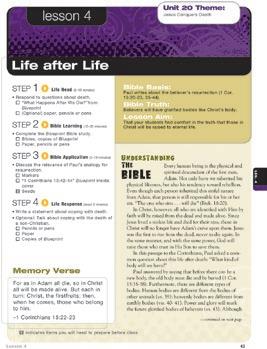
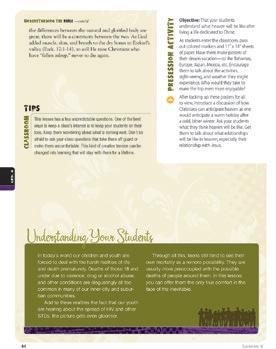
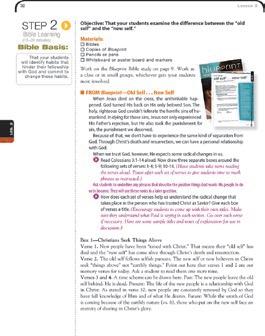
Each teacher commentary contains step-by-step instructions for sharing the lesson with your students. Includes creative ideas as well as suggestions for instructing and challenging your teens as they learn the Bible and apply its principles to their lives. One per class.

The High School Teacher’s Commentary and Blueprint are also available in a digital format. Need one bundle per class.

Find ways to spark your heart and ignite your ministry. Go to MinistrySpark.com and sign up to receive more free resources.
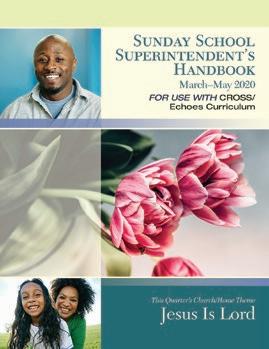
Superintendent’s Handbook has multi-grade material, on a common Biblical theme, to open and close the Sunday school hour.
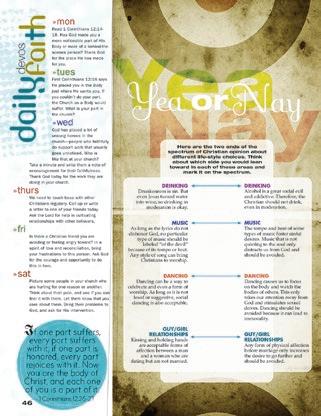

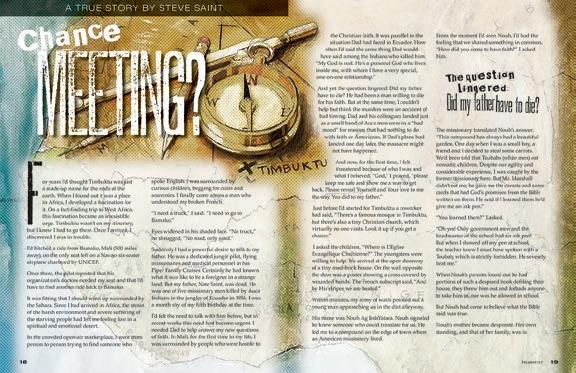
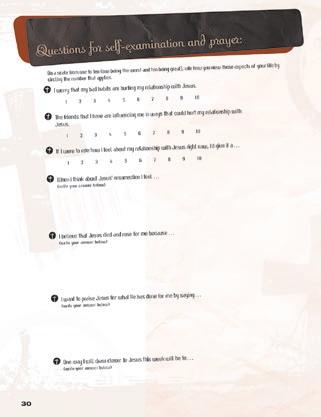
This quarterly magazine is the student component for your high school curriculum. It features the weekly Bible studies and articles for the Bible lesson as well as Daily Faith devotionals for your students to engage their faith throughout the week.
Your teacher commentary directs you to exactly which page to turn to for in-class use. You may want to keep a copy of Blueprint for each student in your class. If so, cut out the Bible study/Daily Faith devotions for students to take home and use each week. Or you can make each student responsible for his own copy of Blueprint, allowing him to take it home to read and bring back each week. If a teen forgets to bring her copy of Blueprint back to class, you can simply give her some scratch paper and have her look off someone else’s Bible study for that week.
Need one per student; however, we recommend having an extra copy or two of Blueprint as classroom copies which you can use for yourself, a student who has forgotten hers, or for any visitors to use.
D OWNLOADED

FREE!
Downloadable Options for Steps 1 and 4
» Relevant subjects (pop culture, trending topics, and fascinating events) that are going on in your students’ world today will help them recognize how God’s Word relates to them here and now.
» Cover topics that students hear and talk about all the time but rarely discuss in Sunday school! RealLifeDownloaded.com
o High School Teacher’s Commentary (1 per class)
o Blueprint (1 per student)
o Bibles
o Index cards
o Markers
o Paper
o Pens or pencils
o Poster board
o Whiteboard, markers, and erasers
See individual lessons for additional supplies needed.

Echoes' step-by-step format allows students to learn Bible truths and how to apply them to their lives. With extra information for teachers, and detailed activities and lessons, students leave class with a deeper understanding about God’s Word.
Teacher Pages give you an overview of the lesson while helping you prepare for what you will teach.
Connecting with God’s Word includes an activity and discussion to help teens connect with each other and with God’s Word through their individual ideas and experiences. This step motivates and gets your students thinking about the Bible truth. For a current events option for this step, go to RealLifeDownloaded.com.
Studying God’s Word gives your students an opportunity to dive into a portion of God’s Word and then review it together. In this step you’ll guide your students to engage in a fruitful discussion about the Bible at a meaningful level.
Interacting with God’s Word allows students a time to explore and interact with the concepts they’re learning. By doing activities founded in the Bible lesson, your students will actively work through the Bible passage by interacting with the text.
Life Response gives teens time to create a personal response to what they have learned in God’s Word. They decide how to apply the Bible truth and lesson aim to everyday life. If you used Real Life Downloaded in Step 1, use the correlating Step 4 here.

by Juliet Liu
Among the many who played a role in the civil rights movement of the mid-twentieth century, Ella Baker stands out as a unique representation of leadership. Ella Baker shows the meaning of Christlike leadership—not seeking to be a charismatic person in the spotlight but accepting the role of a quiet servant, one who raises others up. She demonstrates that true leadership is rooted in giving and empowering others.
Born in 1903 in the state of Virginia, Ella Baker grew up in a family that valued education and community activism. Her grandmother was born into slavery, and her parents instilled in her a strong sense of justice and the importance of standing up against inequality. After college, she began a career as a teacher. Soon her passion for activism took center stage in her professional and personal life. This activism was rooted in the stories her grandmother told, about what it was like to grow up enslaved.
Activism and the NAACP
Baker demonstrated her commitment to civil rights in the 1930s when she began working with the National Association for the Advancement of Colored People (NAACP). Beginning as a volunteer, her hard work and determination advanced her to several leadership roles. Throughout the 1940s, Baker acted as the organization’s first field secretary.
Baker believed in the power of ordinary people to effect change, and her role only made her more certain. This belief would shape her approach to leadership throughout her life, as she began to witness that real power lies in collective action, not in the visibility of individuals.
SCLC and the Importance of Collective Action
In 1957, Baker founded the Southern Christian Leadership Conference (SCLC) alongside Dr. Martin Luther King Jr. and others. As she worked with Dr. King, Baker began to see her vision of leadership diverge from many male counterparts in the SCLC. Several of these men emphasized a centralized, charismatic leadership model: they believed only strong leadership would drive the civil rights movement forward. But Baker advocated for the opposite—a more decentralized, democratic approach to organization. She believed that leadership should not just arise from public speakers in the limelight but from ordinary members of the community. For Baker, it was essential to nurture the skills and voices of those who might otherwise remain unheard.
SNCC and the Empowerment of Young Leaders
Baker’s commitment to empowering others became especially evident in her approach to youth activism. She understood the necessity to engage young people in the civil rights movement and recognize their capacity to drive change. While the SCLC and the NAACP had always made efforts to convince young activists to join their existing organizational structure, Baker feared that young students would not be taken seriously or allowed to contribute in their own unique ways. Baker encouraged the college students to create their own movement. Thus Baker inspired a generation of young men and women to an active rather than passive role in the struggle for civil rights.
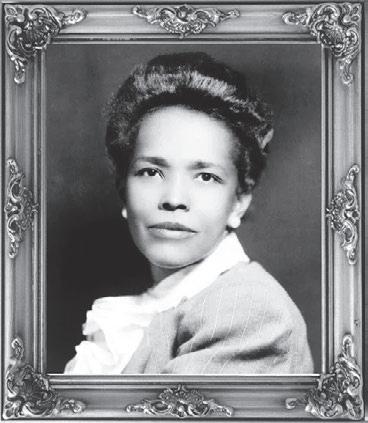
Behind closed doors, Baker challenged Dr. King. She argued that, if people were tempted to worship and follow him as an extraordinary hero, this would not be good for the movement. An emphasis on other charismatic leaders might cause ordinary citizens to question their own ability to make meaningful contributions. Ella Baker did not back down from conflict, and she continued to grow the movement in her own ways.
Baker famously stated, “Strong people don’t need strong leaders.” This philosophy emphasizes the importance of empowering individuals to take ownership of their activism. It is all too easy to tell ourselves, Someone else can be the one to do it. But Baker encouraged individuals to think critically and to take action; she fostered that sense of agency.
Defined by humility and a focus on service rather than personal acclaim, Baker’s leadership style was effective. As she worked behind the scenes, provided support and guidance to others—while deliberately avoiding the spotlight for herself—Baker modeled a different path. Her mentorship extended beyond mere guidance; she invested in the growth, contributions, and success of all those around her.
Ella Baker’s life reminds others of the leadership style of Jesus, who told His disciples that anyone wishing to be a leader must first be a servant of others (Mark 10:43–45). She embodied this principle, demonstrating that true leadership is not about seeking power or recognition but about lifting others up and serving the community. Baker’s legacy lives on and continues to influence activists and leaders today, especially those who value collaboration and community engagement. In a world that values charisma and personal glory, Baker’s example says, Think again. She teaches that effective leaders emerge from the community, driven by a passion for justice and a commitment to the good of others.
Escaping Egypt
Church/Home Theme:
God Redeems and Restores Us
1 ➲ Life Need (5–10 minutes)
• Talk about times in their lives when they have stepped out of their comfort zones.
2 ➲ Bible Learning (15–20 minutes)
• Complete a Bible study about the steps of faith Moses took.
• Discuss Hebrews 11:1.
• Optional: Read the story of Moses from Exodus 1:6—2:10.
□ Bibles
□ Copies of Blueprint
□ Paper and pencils or pens
□ “ Hebrews 11:1” from Blueprint
3 ➲ Bible Application (5–10 minutes)
• Discuss how to make decisions according to faith.
□ “Two Sides of Faithfulness” from Blueprint
STEP 4 ➲ Life Response (about 5 minutes)
• Make decisions to step out in faith when tough situations arise in their lives.
Now faith is confidence in what we hope for and assurance about what we do not see.
—Hebrews 11:1
Bible Basis:
Moses has faith to step out for God (Heb. 11:23-28).
Bible Truth:
Faith is taking God at His Word, and faith provides the basis for all activities.
Lesson Aim:
That your students will be encouraged to express their faith in God and allow their faith to guide their actions.
Today’s lesson is based on verses from Hebrews 11, often called the “faith chapter.” The anonymous writer of this letter defines faith in verse 1. Then he presents examples of people of faith from Israel’s history. These people believed the promises of God and acted on them, although none of them saw the promises fulfilled (Heb. 11:13, 39).
Faith ran in Moses’ family. When he was a baby, his parents sensed God had a special purpose for him. By faith they disobeyed Pharaoh’s order that all newborn Hebrew boys be put to death and saved Moses (Heb. 11:23; Exod. 1:15—2:10).
Raised in Pharaoh’s royal household, Moses was educated in all the wisdom of Egypt (Acts 7:22) and lived in luxury. As a member of the royal palace, Moses had wealth, power, and prestige. But he gave it up to join his people because he looked ahead to a divine reward. By faith, Moses considered God’s promise more valuable than the treasures of Egypt (Heb. 11:24-26; Exod. 2:11-14).
The writer of Hebrews cited two more incidents in Moses’ life that reveal his faith. The first was his flight to Midian (Heb. 11:27; Exod. 2:14-15). Although Exodus 2:14 says Moses was afraid, it doesn’t say of whom. According to Exodus 2:15, Moses fled from Pharaoh when Pharaoh tried to kill him, but it doesn’t say he fled out of
◽ indicates items you will need to prepare before class
—continued on next page



fear. The writer of Hebrews picks up on this and explains that it was an act of faith on Moses’ part to go to Midian.
Forty years later Moses returned to Egypt and proved his faith again and again. The author of Hebrews singled out Moses’ faith in keeping the first Passover (Heb. 11:28; Exod. 12:21-23). By sprinkling blood, Moses and the other Hebrews trusted God to protect their firstborn children from the angel of death.

Today’s lesson offers students a challenge to allow their faith to guide their actions. Some of your students might want to take on the challenge but feel uneasy or afraid. What are they supposed to do? What if they let God down? The situations in Bible Application will give students time to practice stepping out. Encourage students to think of real-life examples, and then brainstorm ways to act in faith.
If your students are comfortable and open with each other, they might want to motivate each other to step out in faith this week. Perhaps they could meet together before school for prayer.
The optional activity at the end of the lesson suggests teens start a prayer journal. Encourage students to be honest and express their feelings of inadequacy or fear to God. These feelings don’t mean they have less faith; it means they’re human! Encourage your young people to keep on trusting God. He keeps His promises.
Teenage years can often be years of disillusionment.
A girl might trust a boyfriend who says it’s okay to have sex, nothing will happen—and then ends up with a baby.
Some teens believe the drug-free, stay-inschool messages they hear from a sports hero, and then listen to the news of the hero’s arrest for drugs.
A youth might depend on a parent to be there in the tough times, but when the tough times come, the parent walks out.
Because of the pain they’ve experienced, young people learn not to trust. In fact, this
Objective: That your students evaluate their trust in different kinds of people.
□ Construction paper
□ Markers
□ Scissors
List these people on the whiteboard: parents, teachers, siblings, friends, reporters, politicians, church leaders. You’ll need construction paper, scissors, and markers.
Ask students to draw a pie-shaped circle and cut the pie into seven pieces. The size of each piece should show how much trust they have in each person listed. For example, if half the pie is for friends, the other half would need to be divided between the other six people.
Let students explain their pie pieces. Talk briefly about why they trust some people more than others. Ask students if they would be willing to do risky things for someone they trusted.
week’s lesson about stepping out in faith might fall on some very skeptical ears.
Your mission, however, is to ask students to take one more risk and place their faith in God. Remind them of God’s trustworthiness. God will never let them down, walk out on them, or deceive them. As your students learn to place their faith in God, they will gain the confidence, the courage, and the strength to step out in faith and follow God the rest of their lives.
(5–10 minutes)
That your students will be encouraged to express their faith in God and allow their faith to guide their actions.
OBJECTIVE: That your students talk about times in their lives when they have stepped out of their comfort zones.
Begin by having students form pairs, and ask each pair to brainstorm situations that require faith—as many as they can. Tell them that for now they don’t need to have a singular definition for faith; also, they shouldn’t linger on any one situation. Give them a minute and have them rattle off numerous situations that require faith. After the minute is up, discuss:
➲ What kinds of situations did you list? (Students may say anything from skydiving to sitting in a chair praying to telling a friend a secret.)
Single out three to five completely different situations or scenarios, and repeat them aloud.
➲ How would you describe why faith is needed in each of these situations? Would it be the same kind of faith or a different kind? Do you think there are different kinds of faith? Explain your answer.
➲ How would you even define what faith exactly is?
➲ Would you describe faith as being more tangible or intangible? Why?
➲ What is your response to the idea of a personal relationship with God that centers around faith? What might this faith compel you to do? Why?
➲ What do you think God wants us to do with our faith? Why? Give an example.
Sometimes the word faith can seem like a really vague concept. We kind of know what it means, but we’re not always sure where it comes from, how we get it or use it, or what it looks like in the context of our everyday lives. Sure, we definitely have an active faith in some things: gravity, for instance. But what about a faith in God? What does it mean to have an active faith in the One who created us and everything else? The One who died on the cross to take away the penalty for our sins? Living out our faith isn’t always a big, dangerous thing like crossing a dangerous abyss. But our task today is to dig into how we, in our often-normal lives, can step out in faith the way God wants us to. Let’s start figuring that out now.
Free! Downloadable Options for Steps 1 and 4.
Bible Learning (15–20 minutes)
Bible Basis:
Moses has faith to step out for God (Heb. 11:23-28).
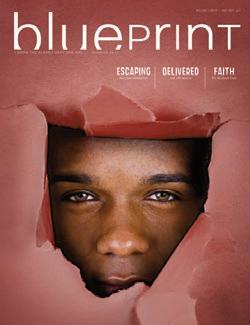

OBJECTIVE: That your students examine Moses’ life in order to define what it means to act in faith.
Materials:
□ Bibles
□ Copies of Blueprint
□ Paper and pencils or pens
□ “ Hebrews 11:1” poster from Blueprint
Turn to the Bible study on page 7 of Blueprint. Hand out paper and pencils or pens for students to write down answers. Read the introduction in the Bible study. Work through the questions as a group, and have students take turns reading aloud and answering questions.
◾ FROM Blueprint—Faith Steps
The Hebrews were having a population explosion, and it was making the pharaoh of Egypt nervous. What if these people, who worshiped a different God than the Egyptians, joined Egypt’s enemies during a war? Pharaoh acted quickly and made the Hebrews slaves.
But the more God’s people were oppressed, the more their numbers grew. Outraged, Pharaoh ordered that every Hebrew boy should be drowned immediately after birth.
It would have been bad news for a newborn boy named Moses had not his mother acted in faith (see Exod. 1:22–2:2). Let’s look more closely at these faith steps, including the ones Moses took as his faith in God increased.
➲ Read Hebrews 11:23-28. Look at verse 23 again. What prompted Moses’ parents to defy the king’s edict? (Faith. They saw Moses as a beautiful child of the Hebrews’ God, and they were willing to risk death to save him.)
Growing up in Pharaoh’s court, Moses learned to read the great literature of Egypt. He must have known about Egyptian customs and sacred myths. He was educated to become someone great in Pharaoh’s court.
But Moses also learned the history of his own people. He learned about Abraham, Isaac, and Jacob. Moses never forgot. Though his mind had been filled with Egyptian facts, Moses was still a Hebrew. And his God was the God of Abraham, Isaac, and Jacob.
➲ Why did Moses refuse to be called a prince and refuse to receive the pharaoh’s treasures (Hebrews 11:24-26)? (He believed God’s promise to His people was greater treasure than the wealth of Egypt. This promise was worth taking the risk.)
➲ What kept Moses from buckling under Pharaoh’s anger (Heb.11:27)? (Moses didn’t buckle under because he trusted God to deliver him and his people.)
The word “Passover” is mentioned in verse 28. Can anyone describe this event? Have someone look up Exodus 12:3, 6-7, 12-13 and read these verses aloud. Explain that these instructions had to do with the final plague God brought about to deliver His people from slavery in Egypt. According to Exodus 12:12-13, as the Lord passed through Egypt to kill every firstborn, the blood on the Hebrews’ doors would be a sign to “pass over” that house. No one would die.
➲ Why did Moses obey God’s unusual command to begin the Passover
TODAY'S SCRIPTURE
Hebrews 11:23-28
23By faith Moses’ parents hid him for three months after he was born, because they saw he was no ordinary child, and they were not afraid of the king’s edict.
24By faith Moses, when he had grown up, refused to be known as the son of Pharaoh’s daughter. 25He chose to be mistreated along with the people of God rather than to enjoy the fleeting pleasures of sin. 26He regarded disgrace for the sake of Christ as of greater value than the treasures of Egypt, because he was looking ahead to his reward. 27By faith he left Egypt, not fearing the king’s anger; he persevered because he saw him who is invisible. 28By faith he kept the Passover and the application of blood, so that the destroyer of the firstborn would not touch the firstborn of Israel.
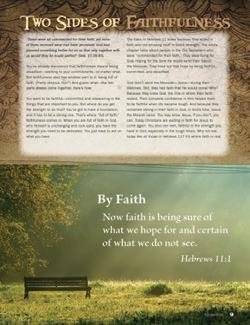
during this terrible time? (Moses trusted God and knew the Passover was His only protection for His people.)
➲ Each of Moses’ steps, taken by faith, cost something. What did it cost Moses to step out in faith (Heb.11:25-26)? (It cost Moses his rights to the privileges, luxury, and prestige of a royal palace [the “pleasures of sin” in verse 25]. Moses gave up wealth and power. He was mistreated and disgraced.)
➲ In the long run, what did Moses gain?
• Verse 23 (His life, the deliverance of his people.)
• Verses 24-26 (In the life to come, Moses gained an eternal reward.)
• Verse 27 (Faith and confidence to keep trusting God in tough times.)
• Verse 28 (God’s mercy, the Hebrews were spared; Pharaoh let them go.)
➲ What’s the main difference between what Moses “gave up” and what he gained by trusting God?
(The key phrase in verse 25 is “the fleeting pleasures of sin.” Moses chose to trust God and His eternal promises, instead of relying on temporary things.)
➲ Skim today’s Scripture passage and underline the phrase “by faith” every time it appears. Write a sentence to summarize the point you think the writer of Hebrews wanted to make about faith. (The phrase “by faith” appears four times. Give students a few minutes to write their sentences. For example, “Faith gives us the courage to take a stand for God” or “We live by faith in God.” Point out to students that faith isn’t something passive, but active.)
By studying Moses’ faith, we’ve been attempting to piece together a better understanding of what faith means and of what expressing that faith means. All of Moses’ steps of faith seem to work together to illustrate the definition of faith in Hebrews 11:1.
If students have their Bibles, encourage them to turn to Hebrews 11:1. Have students also look at the memory verse poster of Hebrews 11:1 on page 9 of Blueprint.
➲ This sounds good on paper, but how can we have faith or “be sure” of something in the future? How can we be certain of something we can’t see and have never seen in our lives? (Allow students to speculate.)
According to Hebrews, faith isn’t based on what we see. Rather, it’s based on the knowledge we gain from what we do not yet see. Through faith we know God keeps His promises. Basically, faith is believing God. Also, through faith we discover that God is trustworthy. Faith isn’t a mindless leap, however. God gives us hard evidence that faith in Him makes sense. This evidence includes His fulfilled promises. We also have the testimonies of people such as Moses and Christians today. They’ve discovered that faith in God makes sense.
Materials:
□ Paper and pencils or pens
Have students read the story of Moses from Exodus 1:6–2:10 to help them understand what Hebrews 11 is talking about. Give them a chance to illustrate the story or write a newspaper account of God’s people in Egypt.
Bible Application (5–10 minutes)
OBJECTIVE: That your students relate the personal costs and rewards of expressing their faith in God.
Materials:
□ “Two Sides of Faithfulness” from Blueprint
It’s risky to believe God and step out in faith. You might give up something you want now, or people might think you’re absurd for acting a certain way. There are times you choose to take the risks of faith, even when it might seem to make more sense to do something else.
Read the following examples and discuss the risks of faith and the easy way out.
1. Your friends plan to cheat on an important exam. They say everyone is going to cheat. If you don’t cheat, you might fail the exam and blow your grade point average as well as your chances for a college scholarship.
➲ What would the easy way out be for you? What might faith tell you to do?
2. One of your teachers makes no bones about not believing in God and loves to criticize religious people—Christians in particular. You’re certainly not an expert on the Bible and are easily tongue-tied, but the class starts talking about how ridiculous it is to believe in the Bible and the Resurrection.

➲ What would the easy way out be for you? What might faith tell you to do?
Have students turn to page 9 in Blueprint and read “Two Sides of Faithfulness” on their own. Invite discussion related to the personal costs and rewards of faith. After your discussion, say something like the following: Moses’ story showed us that he believed God and obeyed Him. Moses did this regardless of how things looked and regardless of how tough or confusing things got. If Moses had never acted on his faith or if he had never obeyed God, he would not have served the way he did, and we never would have heard of him.
minutes)
Bible Truth:
Faith is taking God at His Word, and faith provides the basis for all activities.
OBJECTIVE: That your students will make decisions to step out in faith when tough situations arise in their lives.
So, how does one live out faith in God?
We’ve learned a lot about this from Moses’ example. And, we’ve talked about ways to apply faith to the many decisions and relationships and events and questions that fill our lives. It’s great to be prepared, and it’s even better to have a plan for how you will step out in faith after you leave this room today.
But always remember that you can’t come up with the faith you need to make those steps. Faith is something God gives you and builds in you so you are equipped to live as He wants you to. Faith begins inside and is reflected outside as actions. Therefore, in addition to preparing and planning, it’s essential to pray. That begins and continues our faith-stepping process.
Have students separate and find a place they can be quiet before God (but still hear you). Have everyone close their eyes to block out distractions and focus their prayers.
Over the next few minutes, you’ll read the Memory Verse, Hebrews 11:1, three times aloud, then guide students to meditate on a new aspect of their lives and faith.
Read the verse: “Now faith is confidence in what we hope for and assurance about what we do not see.”
➲ What do you hope for? Share this with God. (Pause)
➲ Now, ask God to tell you what He wants you to hope for. Listen. (Pause)
Read the verse a second time: “Now faith is being sure of what we hope for and certain of what we do not see.”
➲ What fears, doubts, or questions do you have about what you “do not see”? Share these with God. (Pause)
➲ Now, ask God about why He might not want you to see or know everything. Listen. (Pause)
Read the verse a third time: “Now faith is being sure of what we hope for and certain of what we do not see.”
➲ How certain are you about God’s role in your life? His plans? Other intangibles? Share this with God. (Pause)
➲ Now, ask God how you can be more actively certain of what you don’t have tangible proof for. Listen.
Have students come together again.
➲ What did you hear or experience during this time of prayer?
➲ How will you rely on God as you make any and all steps of faith?
Encourage students to engage the tools of prayer, preparation, and planning in taking steps of faith. Close with a prayer asking Jesus to draw each of you closer to Him, and guide you in actively following Him with your lives.
As you discuss salvation with your class, remember that each student is developmentally different . Some students may not be spiritually mature enough to go through all the steps to become a Christian or all the steps to have a relationship with God . They may not fully understand that they are accountable to God for their sins and need forgiveness that Christ makes possible .
However, learning that God loves them and wants to forgive their sins will prepare them for the time when they are ready to receive Christ as Savior You and your church family have the responsibility to provide this information and the environment for this learning .
For those who do express an interest in personal salvation, try talking with them alone after class or arrange a time for them to meet on this subject with the pastor or one of the church officers . As you prepare to talk with a student about his/her personal salvation, you may want to read the Scriptures listed to reacquaint yourself with their messages . Share this information naturally with your student .
Help your students know how to pray This should include teaching how to tell Jesus they believe He is God’s Son, they are sorry for their sins, and they want Him to forgive them and be with them always .
The two sets of steps listed here are a help for you to be ready to respond whenever the Holy Spirit leads a student to you to make a commitment to Christ . To give your student both steps at once may be too much to process Offer steps to your student as you are led by the Holy Spirit


1. Respond to God’s invitation to salvation
Jeremiah 31:3; John 3:16
2. Seek a relationship with the Lord Isaiah 55:6-7; Matthew 6:31-33
3. Confess your sins
Romans 3:23 and 10:9-10; 1 Corinthians 15:3-4; 1 John 1:9
4. Repent of your sins
2 Chronicles 7:14; Luke 13:3 and 15:7; Acts 17:30
5. Ask God to save you Romans 10:13
1. Listen to the Holy Spirit John 14:26; John 16:13-14
2. Adjust your life to God’s will
Jeremiah 18:1-6; Matthew 22:37-38; John 5:17, 19-20, and 8:47
3. Learn to be God’s servant Matthew 20:26-28; Philippians 2:5-8, 13
4. By faith, join God in His work Amos 3:7; Hebrews 11:24-29; James 5:17-18
5. Remain faithful to God Philippians 3:4-14

Based on the groundbreaking series, “The Chosen,” these interactive Bible study guides span each season.
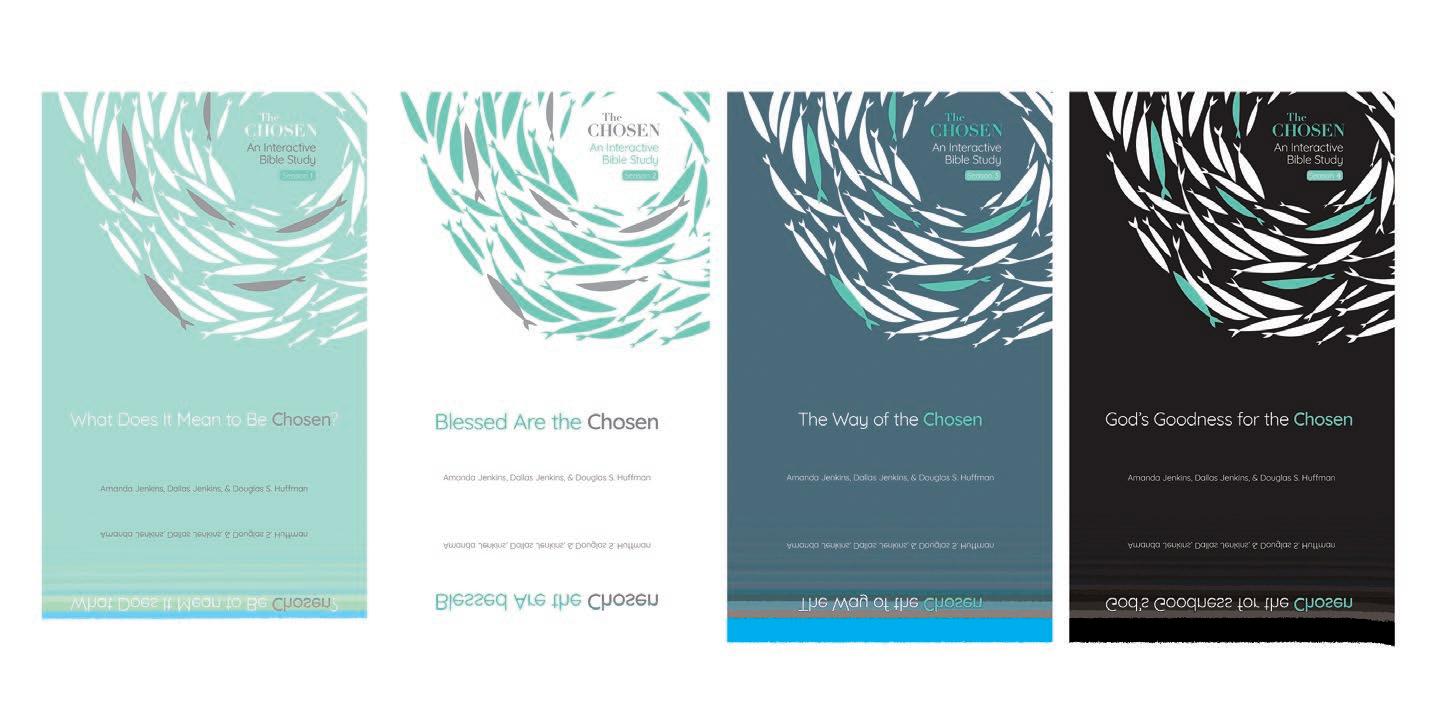
Each Bible study parallels a season of The Chosen TV series. Quotes from the series, thought provoking questions, and in-depth studies of biblical passages have helped The Chosen become one of the bestselling Bible study series for small groups.
Order your copies today! Blessed Are the Chosen Season 2 What Does it Mean to Be Chosen Season 1 The Way of the Chosen Season 3 God’s Goodness for the Chosen Season 4

General Editors
Frieda Nossaman
Verinda Birdsong
Designers
MTWDesign and Stephanie Hopkins
Cover Illustration
Photos & Illustrations


© iStockphoto/Thinkstock
© Thinkstock; pg 13 Illustration: iStockphoto © John Woodcock; pg 26 illustration: iStockphoto; pg 28 Graphics: Russell Barr
ECHOES HIGH SCHOOL BLUEPRINT is published quarterly by David C Cook, DavidCCook.org. © 2025 by David C Cook, 4050 Lee Vance Drive, Colorado Springs, CO 80918, U.S.A. Bible In Life and David C Cook and its related logos are registered trademarks of David C Cook. All rights reserved.
ISBN 978-1-434-70360-6 #1507525. Printed in Gunpo-si, Gyeonggi-do, South Korea, February–April 2025. All Scripture quotations, unless otherwise indicated, are taken from the Holy Bible, New International Version®, NIV® Copyright © 1973, 1978, 1984, 2011 by Biblica, Inc.® Used by permission. All rights reserved worldwide. Scripture quotations marked The Message are taken from THE MESSAGE, copyright © 1993, 2002, 2018 by Eugene H. Peterson. Used by permission of NavPress. All rights reserved. Represented by Tyndale House Publishers, a Division of Tyndale House Ministries.





Hebrews 11:23-28

The Hebrews were having a population explosion, and it was making the pharaoh of Egypt nervous. What if these people, who worshiped a different God than the Egyptians, joined Egypt’s enemies during a war? Pharaoh acted quickly and made the Hebrews slaves.
But the more God’s people were oppressed, the more their numbers grew. Outraged, Pharaoh ordered that every Hebrew boy should be drowned immediately after birth. It would have been bad news for a newborn boy named Moses had not his mother acted in faith (see Exodus 1:22–2:2). Let’s look more closely at these faith steps, including the ones Moses took as his faith in God increased.
C Look at verse 23 again. What prompted Moses’ parents to defy the king’s edict?
Growing up in Pharaoh’s court, Moses learned to read the great literature of Egypt. He must have known about Egyptian customs and sacred myths. He was educated to become someone great in Pharaoh’s court.
But Moses also learned the history of his own people. He learned about Abraham, Isaac, and Jacob. Moses never forgot. Though his mind had been filled with Egyptian facts, Moses was still a Hebrew. And his God was the God of Abraham, Isaac, and Jacob.
C Why did Moses refuse to be called a prince and refuse to receive the pharaoh’s treasures (Heb. 11:24-26)?
C What kept Moses from buckling under Pharaoh’s anger (Heb. 11:27)?
C Each of Moses’ steps, taken by faith, cost something. What did it cost Moses to step out in faith (Heb. 11:25-26)?
C In the long run, what did Moses gain?
•Verse 23
•Verses 24-26
•Verse 27
•Verse 28
Skim today’s Scripture passage and underline the phrase “by faith” every time it appears. Write a sentence to summarize the point you think the writer of Hebrews wanted to make about faith.
Hebrews 11:23-28
23By faith Moses’ parents hid him for three months after he was born, because they saw he was no ordinary child, and they were not afraid of the king’s edict.
24By faith Moses, when he had grown up, refused to be known as the son of Pharaoh’s daughter. 25He chose to be mistreated along with the people of God rather than to enjoy the fleeting pleasures of sin. 26He regarded disgrace for the sake of Christ as of greater value than the treasures of Egypt, because he was looking ahead to his reward. 27By faith he left Egypt, not fearing the king’s anger; he persevered because he saw him who is invisible. 28By faith he kept the Passover and the application of blood, so that the destroyer of the firstborn would not touch the firstborn of Israel.

»mon
Hebrews 11 is the Bible’s hall of fame for men and women of faith. Look through the chapter and read about some of these heroes of the faith. How do these people’s stories illustrate faith as defined in Hebrews 11:1?
»tues
Design a bookmark. Use brightly colored construction paper and cut out the letters F-A-I-T-H and glue them to the bookmark. Write Hebrews 11:1 at the bottom.
»wed
Using a dictionary and thesaurus, create an acrostic from the word faith . For example, Fidelity, Assurance, Involvement, Trust, and Holding. Now it’s your turn.
»thurs
Read Matthew 6:25-34. Trusting God means taking Him at His Word and believing His promises. Write a cure for worry, based on these verses and Hebrews 11:1.
»fri
Read John 20:24-29. Meet the original “Doubting Thomas.” But even Thomas’s doubts turned to faith when he saw Jesus. List some doubts you might have about a specific relationship or situation. Ask the Lord to help you trust Him to guide your actions and decisions.
»sat
Read Hebrews 11:1. Think of the people you trust. Why do you trust them? Could these people ever let you down? Now, what about God? Write a prayer, expressing your trust and confidence in God, who will never disappoint you.
N ow faith is confidence in what we hope for and assurance about what we do not see.

Faithfulness isn’t something we see very often in this world—many of us have been hurt by people close to us who have been unfaithful—friends, girlfriends/ boyfriends, and even parents. People get bored, angry, or busy and walk away from relationships they’ve formed and commitments they’ve made. When you’re the one left in the dust, you feel hurt, used, and abandoned.
As you strive to grow, the lack of good examples might make it difficult for you to be faithful yourself. After a while, you start to feel like faithfulness—really sticking with something for the long haul—is an impossible ideal. It seems much easier to bounce from one commitment to another, staying with each one only as long as you’re passionate about it. After all, it seems like that’s what everyone else is doing.
It’s a good thing God doesn’t act that way with us. Once we have accepted His Son, Jesus Christ, we are in a forever relationship with Him. He won’t get bored, angry, or busy and leave us. And His faithfulness stands the ultimate test as promised in 2 Timothy 2:13, “If we are faithless, he remains faithful, for he cannot disown himself.”
No matter how many times you have been burned by unfaithful people, you will never be burned by God. That’s just not who He is. So not only can you count on Him to be faithful, but you can also look to Him as your role model in faithfulness. His unwavering commitment to you can be your strength for making unwavering commitments to God and others.


“Blessed are those who have not seen and yet have believed.” John
20:29b